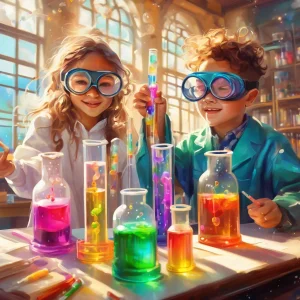Activity
Similar Activities
Enchanted Tales: Family and Friends Story Theater
Children’s Age: 2–7 years
Activity Duration: 10 – 25 minutes
An interactive storytelling activity promoting language, academic, and social development.
Activity Duration: 10 – 25 minutes
Enchanted Nature Walk and Plant Exploration Adventure
Children’s Age: 5–6 years
Activity Duration: 15 – 25 minutes
Let's go on a Nature Walk and Plant Exploration adventure! Get ready with comfy shoes, sunscreen, hats, water, and maybe paper bags, magnifying glasses, and a plant guide. Find a s…
Activity Duration: 15 – 25 minutes
Seasonal Textures: Infant Sensory Exploration Activity
Children’s Age: 3 – 6 months
Activity Duration: 10 minutes
Engage infants aged 3 to 6 months in a sensory exploration activity focusing on seasonal textures for motor, adaptive, and language development. Gather soft fabric swatches, natura…
Activity Duration: 10 minutes
Nature Sounds Sensory Experience for Infants
Children’s Age: 0 – 3 months
Activity Duration: 10 minutes
Engage infants aged 0 to 3 months in a Nature Sounds Sensory Experience to support language development by listening to and exploring nature sounds. You will need a soft blanket or…
Activity Duration: 10 minutes
Seasonal Poetry: A Language Exploration Journey
Children’s Age: 6–10 years
Activity Duration: 30 minutes
Explore the "Language Exploration Through Seasonal Poetry" activity to enhance children's communication and empathy skills through seasonal poems. Gather materials like poems, pape…
Activity Duration: 30 minutes
Enchanted Seasons: Seasonal Story Puzzle Adventure
Children’s Age: 3–4 years
Activity Duration: 15 minutes
The Seasonal Story Puzzle activity is tailored for children aged 36 to 48 months to boost their language skills through a fun and educational game centered around seasonal themes. …
Activity Duration: 15 minutes
Adventure Tales: Family Sports Day Storytime Journeys
Children’s Age: 2–3 years
Activity Duration: 10 – 15 minutes
"Family Sports Day Storytime" is a storytelling activity tailored for children aged 24 to 36 months, focusing on language development, communication skills, and family togetherness…
Activity Duration: 10 – 15 minutes
Seasonal Textures: Infant Sensory Exploration Experience
Children’s Age: 0 – 3 months
Activity Duration: 5 minutes
Engage your 0 to 3-month-old infant in a sensory exploration activity using seasonal textures to support motor and language development. With soft fabric swatches and seasonal item…
Activity Duration: 5 minutes
Nature-Inspired Drawing Activity
Children’s Age: 8–9 years
Activity Duration: 10 – 25 minutes
An outdoor activity where children draw natural elements to foster creativity and ecological awareness.
Activity Duration: 10 – 25 minutes
Animal Feast Adventure: A Whimsical Feeding Frenzy
Children’s Age: 5–8 years
Activity Duration: 10 – 25 minutes
An interactive activity where children feed toy animals with pretend food, promoting communication skills and adaptive development.
Activity Duration: 10 – 25 minutes
Shadow Hunt and Solar Exploration
Children’s Age: 5–6 years
Activity Duration: 10 – 30 minutes
An activity combining Physics, Space, and Ecological Awareness for children aged 5-6 to explore shadows and solar energy.
Activity Duration: 10 – 30 minutes
Cultural Collage Creations: Exploring World Wonders Together
Children’s Age: 7–9 years
Activity Duration: 10 – 25 minutes
Let's embark on a creative journey with "Cultural Collage Creations"! This educational craft project invites children to explore diverse cultures through art. Gather supplies and c…
Activity Duration: 10 – 25 minutes




























